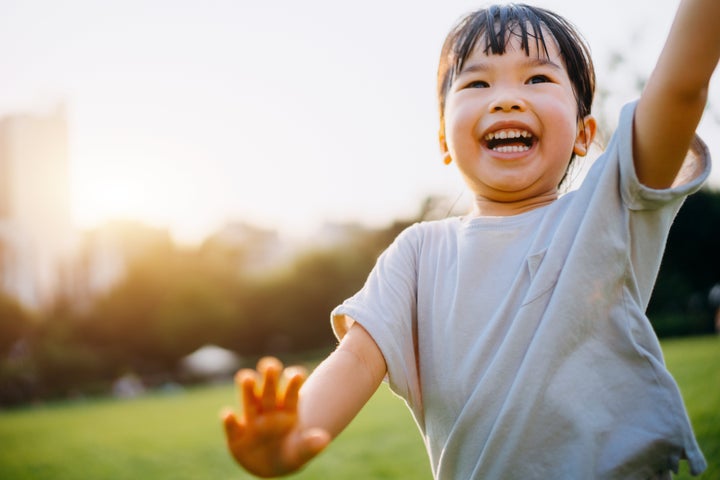
It can be incredibly challenging as a parent to talk to your child about the realities of climate change. Eco-anxiety is real and kids are not immune to it, so many parents have an understandable urge to shield their kids from the reality of what we’ve done to Earth.
On the other hand, if we want to try and raise enlightened climate activists who’ll fight inaction and take care of the planet they’re inheriting, it’s important to be open with them. Finding that balance is daunting.
Here’s one thing that parents can do to help teach kids about climate change without giving them anxiety: Focus on small habits they can start now and build on throughout their lives, like doing what they can to conserve energy. So here are five easy ways to teach even the littlest ones how to lower their energy footprint.
1. Teach them to turn off lights and screens
One of the easiest — and yes, most obvious — ways to teach kids to conserve energy is reminding them to switch off the lights when they leave a room and power down family devices (such as the TV, computer, iPad, etc.) when they’re not in use.
“Preschoolers can’t wrap their minds around global warming, but they’re old enough to understand turning the lights out when they leave the room,” said Amity Hook-Sopko, executive editor of Green Child Magazine, which has a helpful Energy Conservation checklist.
The same goes for not letting the water run while they brush their teeth, she said. You’re training them to remember that whatever they turn on must also be turned off.
2. Help kids understand it’s not the end of the world if they’re slightly cold or hot
No, you should absolutely not make your child uncomfortable. But you can definitely save energy by keeping your thermostat low in the winter, especially when you’re sleeping or not at home, according to the U.S Department of Energy. It’s also wasteful to crank the air conditioner every time it’s hot. (Plus, there’s emerging evidence that people’s ability to cope with heat is being altered by our constant reliance on air conditioners.)
Of course, your child probably doesn’t control the temperature in your home, particularly if they’re young. But it’s a good idea to get them used to finding other ways to cope with a slightly hot or chilly day.
“The HVAC uses the most energy in your home, so encouraging kids not to crank the thermostat up or down is a major way to conserve energy,” Hook-Sopko said. “Get them in the habit of grabbing a sweater or blanket if they’re cool, and dressing lightly or turning on the ceiling fan if they’re hot.”
3. Start a family shower competition
Showers and baths can waste a significant amount of water and energy, Hook-Sopko said.
One way to cut back is by installing WaterSense-labeled shower heads, which meet certain requirements for water efficiency, according to the Environmental Protection Agency. It estimates that the average family could save around 2,700 gallons per year by installing them.
But it’s also helpful to get kids in the habit of taking shorter showers — and make sure it’s a universal rule that applies to you, too.
“Start a family challenge for everyone to cut two minutes off of their showers,” Hook-Sopko said.
4. Ask them to do their homework next to a window
If your child has homework, encourage them to do it next to a window with natural light instead of using a lamp, if possible, Green Child’s checklist suggests. (Of course, this won’t work in the evenings or during the colder fall and winter months.)
Again, you’re teaching them that simple daily choices can make a difference. Besides, taking in natural light comes with health benefits, including increased vitamin D exposure.
In general, teaching kids to appreciate the world around them by spending time in nature or even just soaking up the view outside their window can be a powerful way to foster environmental stewardship.
“Grounding children in the natural world is way more important than teaching them that big tragedies are looming on the horizon,” David Sobel, an environmental educator and faculty member at Antioch University in New Hampshire, previously told HuffPost.
5. Model environmental activism
Yes, teaching children to conserve energy is very much rooted in daily habits, such as turning the lights off and making sure you’re using energy-efficient showers, bulbs and other devices at home.
But it’s not just about the individual roles we play. For things to get better, policies have to change. So teaching your child about what it means to be an environmental activist — whatever that means in your household — is ultimately a way to help lower energy use on a broader scale.
“Older children aren’t [ignorant] to corruption and consumerism, and they can understand the roles big corporations and government regulation (or lack thereof) play in the energy crisis,” Sopko said. “They can also examine how their habits may play a part in the production demand that can lead to environmental challenges.”
So when they’re older — perhaps in their tween or teen years — show them that they can do things like contact their state or local officials and garner support for environmental causes in their neighborhoods and schools. Also, show them what you’re doing — from the habits you keep at home to the steps you’re taking to become more engaged on these issues yourself.
